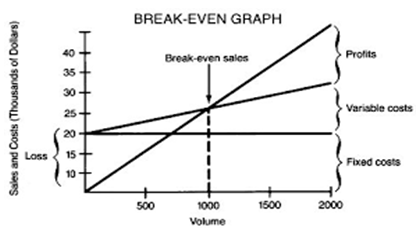
To be successful in the business world one has to control its operations efficiently so that there is minimum wastage of available resources. Generally, Companies follow different techniques or methods for controlling their business operations efficiently. There are two most commonly followed techniques of managerial control and below is the detailed analysis of the same.
2. Techniques applied to control the Managerial Operations:
I. Traditional Techniques
II. Modern Techniques

3. Traditional Techniques:
These are the techniques which were commonly used by various companies. Although in present environment these have become outdated but still many companies are using these:
A. Personal Observations: This is the most traditional and most popular method of control. Under this manager observes the subordinates while they are performing jobs. They generally note down their observations. With the help of these observations they can easily analyze the performance of employees. By comparing the performance chart of current year with the previous year the managers can know the progress of their performance.
B. Statistical Reports: Various concepts of stats such as graphical presentation, correlation, average, percentage, ratios etc. are very useful in analyzing the performance of employees. By converting performances report into statistical chart or table you can easily point out the progress or deviation of performance.
C. Break Even Analysis: Break even analysis is a useful technique to study relationship between costs and profit, break even point is a point of no profit no loss.When sales reaches break even point, it refers to sale amount at which company is neither earning profit nor incurring loss. With the help of break even analysis technique manager can estimate profits at levels of cost and revenue. The formula for calculating break even point is:

Following figure shows Break Even chart of a firm:

Break even chart helps the firms to keep a close check on their variable cost and determine the level of output at which firm can earn its target profit. It also helps to measure the points at which all the costs are fully covered and beyond that point can each more profit.
D. Budgetary control: Budget is a statement of expected results and expected cost expressed in numerical terms. Budget helps us to know the future results and to achieve these results how much we will have to spend. There are different types of budgets which can be prepared by an organization such as sales budget, production budget, financial budget, cash budget etc. Points at which budget focuses upon are as follows:
1. Budget focuses upon standards and objectives of the firm.
2. Budget helps subordinates to compare their performance with budgetary standards and can do self appraisal.
3. Through Budgeting managers can allocate resources to departments according to their budgetary allocation.
4. It helps to use the principle of management by exception by giving more attention to departments where actual operations and target deviate from budgetary standards.
Thus, Success of Budgetary techniques depend upon the estimation of standards. As far as possible we should prepare flexible budgets due to dynamic environment.
4. Modern Techniques:
These are the techniques which are generally preferred by the large scale businesses in this modern era as these are common control techniques such as:
A. Return On Investment (ROI): This technique is also known as return on capital employees. The essence of this approach is that profit is not taken as an absolute figure but it is considered in relation to capital invested. With this method we can compare the earnings of one company with other even when they have invested different capital because it determines the ratio of earning and not the absolute earning. The rate of return can be calculated by using following formula:

B. Ratio Analysis: It refers to evaluation and analysis of financial statements by calculating some important ratios. The common ratios which help to draw important conclusions from the financial statements are:
a. Liquidity Ratio: This ratio helps to measure the ability of businessmen to pay the amount due to various stakeholders. These also helps to know the short term solvency of firms. Common ratios which are calculated are:![]()
![]()
b. Solvency Ratio: This ratio is calculated to find out the long term solvency of firms. It helps to find the ability of firm to pay back its debts. The common ratios which are calculated are:

![]()
c. Profitability Ratio: These ratios are calculated to find out the profitability position of the firm. These ratios measure the relationship between profit and sales. The common ratios used by the companies to measure the profitability are:
![]()
![]()
d. Turnover Ratios: These ratios are calculated to determine the efficient utilization of resources. Higher turnover indicate efficient utilization whereas lower turnover means inefficient utilization of resources. The common turnover ratios are:


C. Responsibility Accounting:This technique of controlling organization is divided into various responsibility centres and head of each centres are generally various sections or departments of an organization and the head of the department is considered as “Responsibility Head” as he is responsible for the overall growth and achievement of his department or centre. Following are the various types of centres:
a. Cost Centre
b. Revenue Centre
c. Profit Centre
d. Investment Centre
D. Management Audit: This control technique helps to measure the efficiency level of managers. Financial audit has been used by firm from long time but the management audit is a new concept. Management audit is a comprehensive and constructive review of the performance of management team of any organization. It reviews overall plan and policies of managers. It would highlight possible opportunities for the organization. It ensures updating of existing managerial policies and strategies in the light of environment changes.
E. Network Techniques (PERT & CPM): Progamme Evaluation and Review Technique provides managers with the information they need in planning and controlling schedules and cost in development projects. Under Critical Path Method the project is analysed into different operations or activities and their relationships are determined and shown on the network diagrams.
F. Management Information System (MIS): This technique provides information and support for effective managerial decision making. Right decision can be taken at the right time only when managers receive accurate and timely information. MIS is a communication tool for managers by which they can take timely actions from the standards.
5. Conclusion:
After learning the Traditional and Modern Techniques of managerial control We have concluded that small scale business houses generally follow the traditional technique of controlling, while on the other hand large scale businesses mostly prefer modern techniques using different ratios.
(The Author can be reached at giteshsulania@gmail.com)




